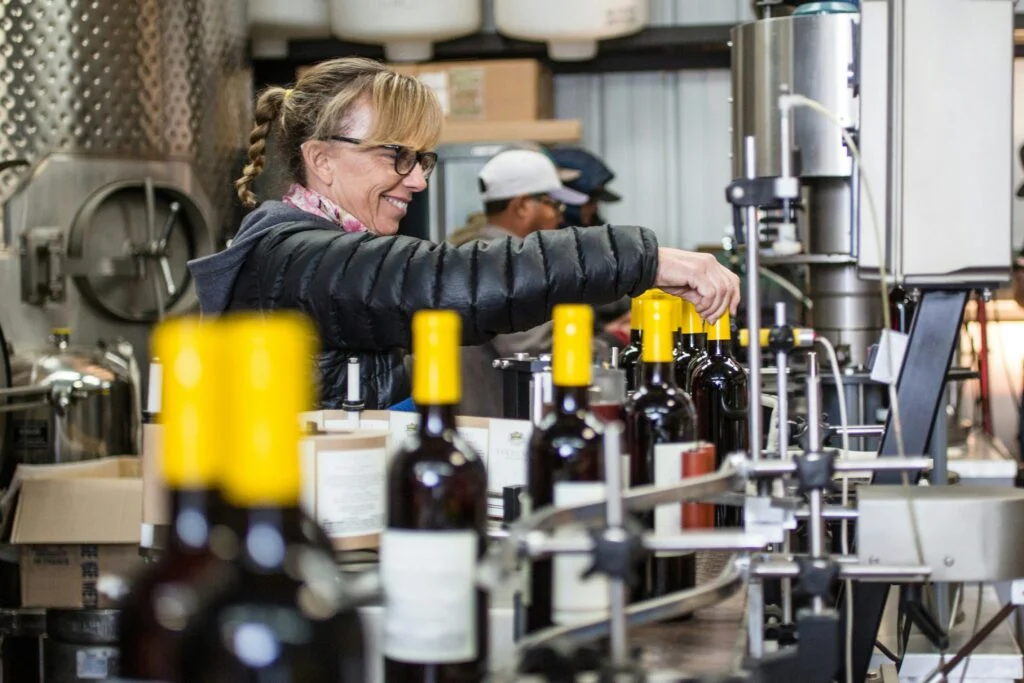Manufacturing Workforce Scalability: Why Contingent Staffing Works in Unpredictable Markets
June 25, 2025

In an industry where demand can spike overnight or stall without warning, the ability to scale your team quickly is a competitive advantage. That’s where contingent staffing comes in.
In the manufacturing industry, staffing needs change quickly. That’s why including a contingent staffing partner in your overarching workforce hiring strategy is essential for production companies seeking agility.
Contingent staffing is a hiring approach that involves employing contract, temporary, or project-based workers. These workers can range from entry-level general labor to highly skilled employees, depending on your needs. A flexible staffing partner will be able to find an employee with the experience, skills, and availability you need to succeed. Ideal for meeting seasonal demand, adding production lines, filling sudden workforce gaps or long-term absences, temp staffing offers a variety of solutions without a long-term employment commitment.
Read on to learn more about how contract staffing is an ideal solution for manufacturers large and small—especially in today’s challenging business environment.
The Challenges of Workforce Scalability in Manufacturing
The manufacturing industry faces some barriers when aiming to achieve workforce scalability.
For example, market volatility can significantly affect manufacturing companies. When unexpected changes arise, companies have to respond. Sometimes, global supply chains are the issue; in other cases, economic uncertainty shakes up demand. Companies must react to these time-sensitive challenges by adjusting their staffing needs. In the case of increased demand, manufacturing facilities can quickly face a shortage of workers.
However, there are also issues when a workforce is overstaffed. Some manufacturing companies scale their workforces, but employees are underutilized when demand isn't as high. This approach is costly, especially since you can fill gaps using contingent staffing strategies. It is unnecessary to overstaff during slow periods or hire someone full-time when you only require access to specialized skills or expertise for a short period.
Understanding the Role of Contingent Staffing in Manufacturing
Contingent staffing involves hiring non-permanent workers and temporary staff members to meet the requirements of specific projects or periods. In manufacturing, the most common contingent workers are those who are hired for:
- Particular durations, often in response to changes like seasonal demand (temporary)
- Fixed periods based on defined deliverables (contract workers)
- Required services or tasks (independent contractors)
- Specific projects when specialized knowledge is needed (consultants)
Unlike traditional staffing methods, contingent staffing allows organizations to adjust their workforce based on demand, ensuring they can maintain the required operational efficiency without the financial burden of permanent hires.
Why Contingent Staffing is an Advantage in Unpredictable Markets
In the manufacturing industry, you need to expect the unexpected. Anything from geopolitical tensions to changing consumer preferences can make forecasting demand, managing costs, and maintaining productivity difficult. That is why contingent staffing is ideal, especially when you have reliable access to a vetted talent pool.
Some of the reasons to consider contingent staffing include:
- Flexibility and rapid response to market changes
- Cost savings and financial efficiency
- Access to a diverse talent pool with specialized skills
Best Practices for Implementing Contingent Staffing
Having streamlined contingent staffing process before you need additional workers is the best way to remain agile in a constantly changing market. Consider the following tips to ensure success.
Choose the Right Staffing Partner
Finding a reliable staffing agency that provides access to qualified candidates when you need them can mean the difference between costly delays and operations going on as necessary. The agency you partner with should also have industry expertise and understand the skills and qualifications you seek. While their available talent network matters, the partner must also have experience, communicate with you throughout the process, and understand all the relevant labor laws and regulations.
Integrate with Existing Workforce Strategies
You must identify fluctuating workloads once you consider adding contingent staffing to your existing workforce strategies. For example, lean on historical data to determine spikes in seasonal or project-based demands. When is the time that you require a flexible workforce most? You also want to consider your current skill gaps so that you can optimize costs, establish policies, define roles, and monitor workforce scalability.
Address Legal and Compliance Considerations
If you hire contingent workers for specific periods, you must remain compliant. Compliance includes:
- Accurately classifying workers
- Managing employment authorization status
- Holding the appropriate insurance
The right staffing partner can help you navigate this process.
Considering Contingent Staffing? Snelling Can Help
At Snelling, we have matched top talent with companies like yours since 1951.
With direct experience in the manufacturing industry, we can help you manage your flexible staffing plan and bring you the skilled workers you need when you need them most.
Have questions? Contact our team today!







